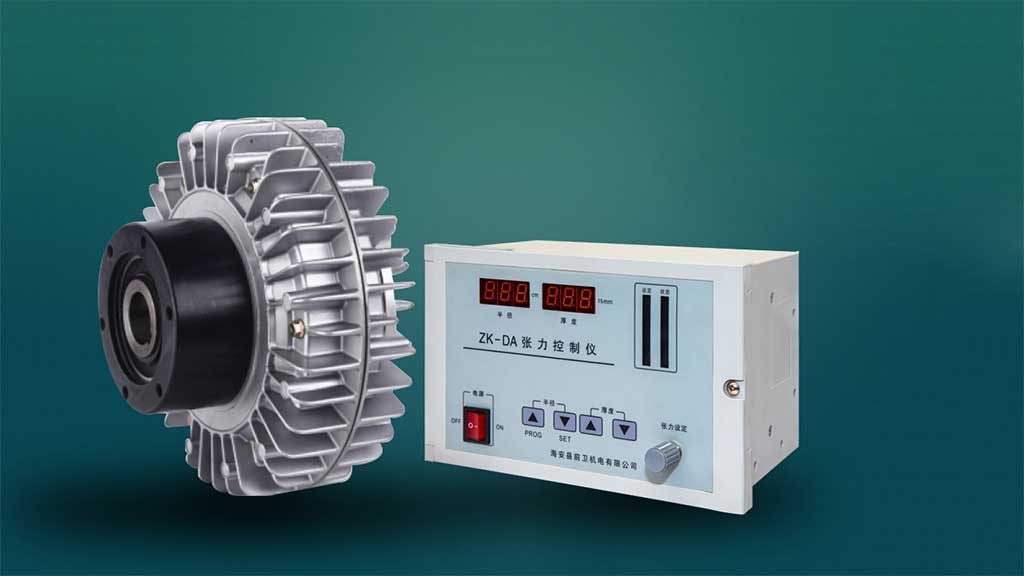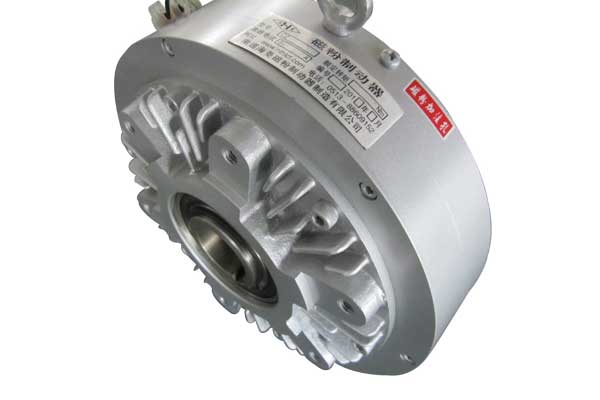Precision tension control is needed for many types of packaging or labeling machinery. Stretch-wrap machines wrap thin plastic around boxes stacked tall on a pallet, to keep the boxes secure and prevent movement during shipping. Automatic machines also apply plastic labels or film from a large supply roll onto drink containers or other food and beverage products. To control the tension of the stretch wrap material, a slip brake is used to apply torque to the center of the supply spool.
Tension control systems of packaging or labeling
Friction brakes are used on low-cost machines and the output torque is not very smooth, or consistent. Torque varies with slip speed, usage, and even humidity. The friction plates wear and need replacement often.
Magnetic particle brakes

Magnetic particle brakes are used in higher-end machines for better tension control and long, maintenance-free life. Slip torque is very smooth, controllable, and consistent as magnetic particle brakes do not use friction plates. Instead, a disk is centered in a chamber that is filled with microscopic stainless steel balls, which are the “powder” or “particles.” The powder is free-flowing until a magnetic field is applied from the stationary coil. The powder forms chains along the magnetic field lines, linking the disk to the chamber wall. The torque is proportional to the magnetic field and therefore to the applied DC input current.
DC power
Only a simple DC power supply is needed to control the brake. To keep the tension constant when unwinding rolls of material, however, a follower arm potentiometer or ultrasonic sensor is used, along with the power supply, to vary torque based on roll diameter. The diameter of the roll decreases as the roll of material is used up and as the diameter decreases, torque must be decreased proportionally to keep the tension constant.
Follower arm potentiometer
A follower arm potentiometer can be used to measure the roll diameter. An arm, sometimes with a roller on the end, rides on the roll and as the roll diameter changes, the arm moves toward the center of the roll. This rotates the potentiometer shaft changing the resistance which in turn, causes the power supply to output less current to the brake automatically decreasing braking torque.
Ultrasonic sensor
An ultrasonic sensor can be used instead of a follower to measure the roll. The sensor measures distance by sending an ultrasonic pulse of sound and then measuring the time for the return echo pulse. This non-contact method is needed if the roll is sticky or scratches easily. The ultrasonic sensor controls the power supply powering the brake, keeping tension constant, based on roll diameter. Works Cited: Placid Industries
